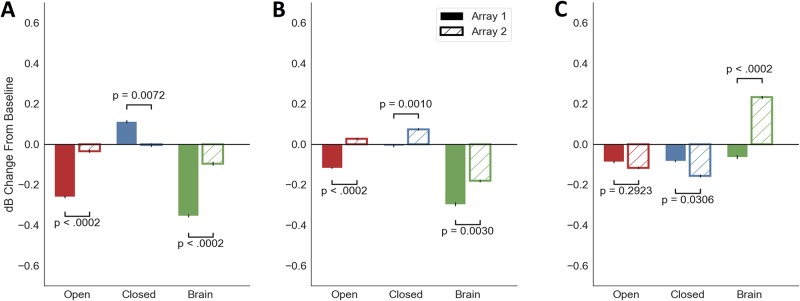Fig 5. The response to stimulation, especially closed-loop, differs between the array used for closed-loop control (Array 1) and a more distant set of electrodes (Array 2).
(A), alpha power changes between 0.5 and 1 s after stimulation offset. The increase in alpha with Closed-loop stimulation was specific to Array 1 (p = 0.007 uncorrected, p = 0.011 FDR, permutation test). Changes from Open-loop and Brain-based stimulation were non-specific, with both arrays decreasing from baseline. Array 1 effects were still stronger (both p < 0.0002 uncorrected, p = 0.0003 FDR, permutation test). Error bars again represent 95% confidence interval inferred from bootstrap resampling. They are narrower than in Fig 3 because the unit of permutation is the array, and arrays had less internal variability than did stimulation conditions. (B), beta power changes between 0.5 and 1 s after stimulation offset. Array 2 shows non-specific changes to Closed-loop stimulation not present on Array 1 (p < 0.003 uncorrected and p < 0.031 FDR for difference between arrays in all conditions, permutation test). (C), high gamma power changes between 0.5 and 1 s after stimulation offset. Effects are again non-specific, with Array 2 showing a decrease from Closed-loop stimulation and increase from Brain pattern stimulation relative to Array 1.

